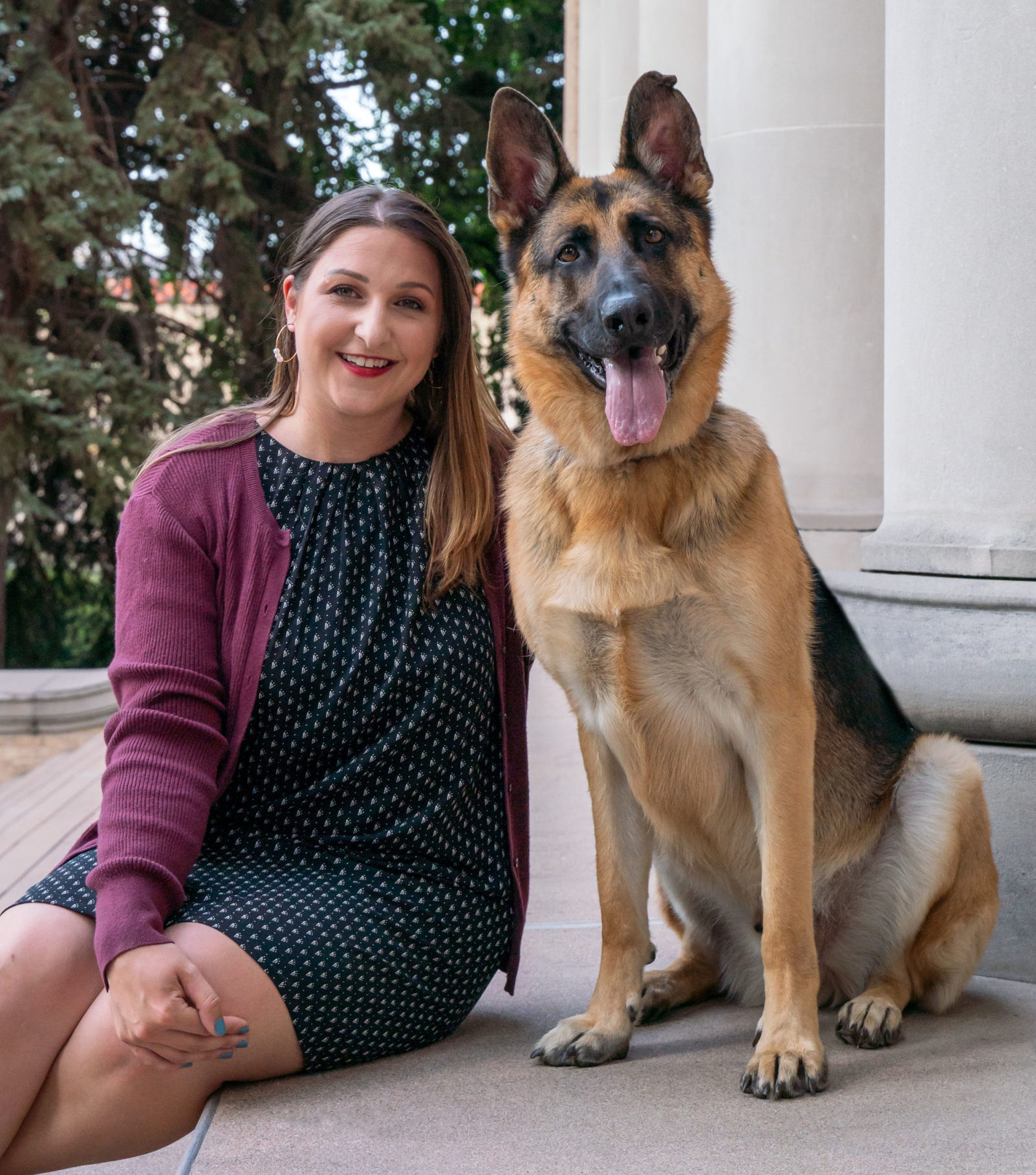SInce the fall of 2020, the Human-Animal Bond in Colorado – HABIC community has been fortunate to have Kerri Rodriguez as a postdoctoral research fellow. Rodriguez holds her Ph.D. in Human-Animal Interaction from the Center for the Human-Animal Bond at Purdue University College of Veterinary Medicine.
Rodriguez’s research focuses on quantifying outcomes from the interactions and relationships that we have with dogs, including pet dogs, therapy dogs, facility dogs, and assistance dogs. She has authored 30 publications, given more than 100 national and international presentations, and has been featured in publications such as the Washington Post, New York Times Magazine, and the Chicago Tribune.

This summer, Rodiguez will begin the next phase of her career, as an assistant professor at the University of Arizona College of Veterinary Medicine. Learn more about why she aims to understand how we benefit from therapeutic interactions with dogs.
How did you get started in this field?
As a kid, I knew I would do something with animals when I grew up. I discovered a passion for research at my alma matter, Duke University, where I conducted comparative cognition research to understand how animals solved problems, cooperated, and communicated. After working with many different species ranging from lemurs and chimpanzees to grey seals, I entered the world of canine cognition to explore how domestic dogs navigate their social world with humans. As I became more interested in the mechanisms and outcomes of dog-human relationships, I was lucky that my future mentor, Maggie O’Haire, was recruiting a PhD student to research that exact topic at Purdue University. Right place, right time!
What is the focus of your research?
My research aims to understand how and why we benefit from therpeutic interactions with dogs, and under what contexts and conditions these benefits occur. I research both short-term interactions—such as animal-assisted interentions with therapy dogs—as well as long-term interactions, such as those we have with our pet dogs or an individiual with a disability has with their service dog.
What brought you to HABIC and CSU?
I was thrilled when HABIC posted an opening for a postdoctoral research fellow. The study of human-animal interaction is extremely interdisciplinary, and requires expertise from both the animal and human sides. With HABIC being housed in the School of Social Work, I knew there would be opportunities to conduct really innovative research on the roles of animals in our lives. Plus, Fort Collins sounded like a great place to live for a couple of years! I love the community here.
What kind of research have you been involved in at CSU?
One of the projects I’ve worked on explores the role of positive relationships with pets for children who have experienced adversity, such as child abuse, household dysfunction, or community challenges. This research has been in collaboration with Dr. Samantha Brown from CSU’s School of Social Work, who is an expert in child adversity research. Previous research suggests having social support from friends, siblings, and parents is really impactful for buffering the negative outcomes from stressful events during childhood. However, we know very little about how a close bond with a pet may play a similar buffering role. Our results so far have found that a positive relationship with a pet may be protective in some contexts but are likely not as impactful as positive relationships with friends and family members. We’re now digging into understanding why some child-pet bonds are protective, and why others may not be. Apart from this research, I am also involved in various research projects both at CSU and with collaborators at other universities.
Why is animal-assisted intervention research important? Don’t we already know that dogs are good for us?
I love this question! Imagine if Animal-Assisted Interventions were an experimental drug of some sort. If we only had stories and anecdotes as ‘evidence’ that it worked, we would be unable to advocate for its widespread use, ensure its safety, or improve its efficacy. Funding agencies, healthcare professionals, insurance providers, and policymakers alike all require strong science behind any intervention or treatment, no matter how promising the benefits are.
Second, research helps us understand how animal-assisted interventions work, so we can better understand how to maximize their efficacy. For example, if I asked an individual with post-traumatic stress disorder (PTSD) how they felt after 5 minutes petting a therapy dog, they might say they feel happy and relaxed. Research can put numbers behind those emotions to measure changes in brain chemistry, stress hormones, and cardiovascular systems. Then, we can compare the results with other types of PTSD therapies and interventions. This kind of information is critical for our collective understanding of the human-animal bond.
What’s next?
After two and a half years as a postdoc, I am ready to enter the next phase of my career! In June, I am joining the University of Arizona College of Veterinary Medicine as a tenure-track assistant professor. While I’m sad to be leaving HABIC and CSU, I’m excited to start a research group of my own.
 About Human-Animal Bond in Colorado
About Human-Animal Bond in Colorado
Founded in 1993, Human-Animal Bond in Colorado (HABIC) is a center in the School of Social Work, part of CSU’s College of Health and Human Sciences. HABIC’s mission is to improve the quality of life for people of all ages through the therapeutic benefits of companion animals, with particular focus in the areas of community outreach, teaching, and research.